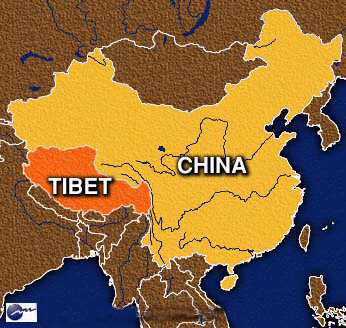Geography
Surrounded by 4 of the world's 10 highest mountains, Tibet plateau deserves the title ‘the Roof of the World'. It covers an area of 1.2 million square km, shares an approximately 3,500km international border lines with India, Nepal, Bhutan and Myanmar, it is encircled by Xinjiang, Qinghai, Sichuan and Yunnan Province to the north and east. However, the 3rd largest virgin-forest of China is located in Tibet.
Climate
Although temperatures vary greatly in a single day, sometimes can drop 15 C, the climate is not as harsh as most people imagine it being, especially the central area such as Lhasa, Tsedang and Shigatse, the major cities in Tibet have mild weather all year around, not hot in the summer, and not cold in the winter. It rains quite often during monsoon and reaches 12 inches of rainfall, but it hardly ever snows in the winter time because of its dry weather. Sunshine is immense.
Health
For most places you travel in Tibet are 3,600 m and upwards, so heart pounding and shortness of breath are normal responses, they are caused by lack of Oxygen and have nothing to do with age, sex and fitness. Relaxation for acclimatization is requested especially for the first day in Tibet. If the mountain sickness is acute with headache, dizziness, loss of appetite, nausea and vomiting, you should go and see a doctor. You are suggested to drink at least 4 liters of water a day because of the dryness. Bring with you dark sun-glasses and lotion to prevent you from immense sunlight.
Entry Procedures
A valid passport including a Chinese entry visa is essential. For the foreign tourists who come from main land China to Tibet, another ‘Tibet Permit' issued by the Tourism Administration Bureau of Tibet Autonomous Region is required. You could only apply the permit through a qualified local travel service. For the tourists who want to enter Tibet from Nepal, you have to contact the local travel services for applying entry visa invitations issued by the regional Tourism Administration Bureau, and obtain your Chinese entry visas from the Chinese Embassy in Kathmandu, Nepal.
Tibetan Diet
The Tibetan cuisine is pretty basic mainly consists of quite amounts of Tsampa (roasted barley flour) and endless bowls of butter tea. A steamed meat dumpling is called Momo and wind-dried raw meat (beef or mutton) is the nation's favorite. The main item of drink is Chang, fermented barley been and butter tea, a salty black tea juice mixed with butter. Chinese, Western and Muslim food are available in both the hotel and social restaurants.
Clothes
Remember that temperatures vary greatly in a single day with the difference of sometimes 20 c and in the summer period, it always rains in the morning and stops at noon, so dress accordingly. Always bring raincoat with you if you are here between Mid-Aug to Mid-Sep, and always bring an extra coat or sweater since the temperatures are not the same between sun and shade, outdoor and indoor.
Photography
Color print film is generally available in most of the major cities and towns but slide film is only available in Lhasa. Pictures taking is always free of charge but be careful not to take pictures at sensitive stuff or military. Photography in temples and monasteries may be permitted for a fee, you should ask first. Always ask first for photographing people.
Yak
Yak is the most impressive animal in Tibet. In general speaking, yak is a cross between a wild yak and a cow and few nonnative people know that yak is only male. On average, an adult yak is 1.5 m in height and has long hair, is skillful in steep, narrow trails even load with 70kg on its back. Yak can be herded easily be herds and never like to stay alone. Despite, yak-hide boat is the most important mean of transport for waterway.
|
